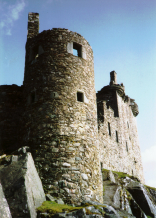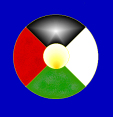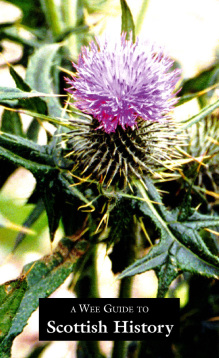To the Present
1754 Founding of the Royal and Ancient Golf Club
The Royal and Ancient Golf Club was founded at St Andrews in 1754.
1756 Birth of Sir Henry Raeburn
Raeburn was born in 1757 in Edinburgh, and became a leading portrait painter, both in Edinburgh and London. He produced about 600 portraits, some of which are on display at the National Portrait Gallery in Edinburgh, and was knighted in 1822. He died in 1823.
1757 Birth of Thomas Telford
Thomas Telford, the famous civil engineer, was born at Westerkirk in Dumfries in 1757. He was the chief engineer involved in the building of the Caledonian Canal, begun in 1804; and he built the Telford Bridge in Edinburgh, as well as harbours at Aberdeen and Wick. He died in 1834.
1759 Birth of Robert Burns
Robert Burns, Scotland’s most popular poet, was born in Alloway, Ayrshire, in 1759. He was a farmer, both in Ayrshire and Dumfries, and an excise man. His poetry in Scots and English won him renown, and among his best-known poems are For Auld Lang Syne, Scots Wha Hae and Tam o’ Shanter. He died in 1796 at Dumfries, when only 37 years old. There is a visitor centre in Dumfries devoted to Burns, and his cottages in Alloway and Dumfries are also open to the public.
1760 Death of George II & Accession of George III
George II, the last British monarch to lead an army into battle, died in 1760, and was succeeded by his son, George III.
1776 Edinburgh’s New Town started
Edinburgh became very cramped, confined within the city walls and by Castle Hill. In 1776, land to the north of the castle was drained and cleared, and broad well-planned streets laid out, including Princes Street, George Street and Queen Street. It was to a design by James Craig. Building continued in different phases until 1840.
1770 Founding of the Clyde Trust
The Clyde Trust was founded in 1770, and was responsible for a massive programme of excavation and dredging which eventually made the River Clyde navigable as far as Glasgow. This made Glasgow a centre of trade to rival Liverpool or London.
1771 Birth of Sir Walter Scott
Walter Scott was born in 1771 in Edinburgh. He revived interest in Scottish history, encouraging George IV to come to Scotland in 1822 after the rediscovery of the Scottish regalia in 1818. Scott moved to Abbotsford in 1812, which now houses a collection of historic artefacts. Scott wrote a number of novels and poems. He died at Abbotsford in 1832, and was buried at Dryburgh Abbey.
1776 Publication of Wealth of Nations & death of David Hume
Adam Smith, born in Kirkcaldy in 1723, published the influential work, the Wealth of Nations. David Hume, who was born in 1711, the philosopher, died this year.
1785 Founding New Lanark
New Lanark was planned in 1785, and became one of the largest and important water-powered spinning mills and a model industrial complex. Robert Owen took over as manager in 1800, and introduced many enlightened social reforms, such as schools and subsidised shops.
1782
The Act proscribing Highland dress was repealed.
1790 Death of Flora MacDonald & opening of Forth–Clyde Canal
Although she had spent much of her life in Canada, Flora MacDonald returned to her native Skye, where she died in 1790.
The Forth-Clyde canal, between the two rivers, also opened this year.
1790– The Clearances
Many Highland estates were reorganised for the farming of sheep rather than crofting, and landless tenants were thrown off land they had held for generations. They left for the lowlands or went abroad, although those who left fared better than those that stayed. Lowland areas were also cleared of people to make way for improved agricultural techniques.
1811 Birth of Sir James Young Simpson
Simpson, who was born at Bathgate in 1811, pioneered the use of anaesthesia in childbirth in 1847, while professor of Midwifery at Edinburgh. He died in 1870.
1812 Launching of The Comet
The Comet, the first steamboat on a navigable river, was launched on the Clyde. The Clyde became famous for ship-building, after the Vulcan (1818), an early iron ship, and Faerie Queen (1831), an iron steamer, were launched here. By the 1850s, it had become the major ship-building centre. The Queen Mary (1934) and Queen Elizabeth (1939) were also built here. By the 1960s, however, ship-building was in decline.
1813 Birth of David Livingstone
David Livingstone was born at Blantyre in 1813, and later achieved fame as an African explorer. In 1834 he became a medical missionary, and travelled extensively through Africa. Livingstone disappeared and after some years silence, Stanley went to look for him. He found him in 1871, although Livingstone went on exploring until his death two years later.
1820 The Radical War
Following years of deep economic depression, a series of riots and unrest culminated in the Radical War, led by radical weavers. This war was in fact two small uprisings, one to seize the Carron Iron Works, near Falkirk, and another in Strathaven. Both were crushed by government forces, and the leaders were executed, while others were transported.
1820s– Whisky
Whisky had been distilled in Scotland probably from the earliest times, and had reached the Lowlands by 1500. It was first taxed in 1644, and it was henceforth illegal to produce whisky for sale. However, there were many hundreds of illicit stills. This was seen as a problem by the government, and steps were taken to prevent whisky being produced. Measures such as the placing of troops at the castles of Braemar and Corgarff were carried out in the 1830s.
The whisky of the time was of varied quality, and turned cloudy when water was added to it. When vineyards were hit by disease, whisky began to be produced commercially after problems with consistency and colour had been overcome. Whisky is now one of Scotland’s major exports, and distilleries – many of which are open to the public – throughout Scotland, produce both malt and blended whiskies
Dallas Dhu distillery is owned by Historic Scotland and is open to the public – as are many working distilleries.
1822 George IV visits Scotland & opening of the Union Canal
George IV visited Edinburgh this year, the first monarch to do so since Charles II in the 17th century.
This year saw the opening of the Union Canal, which linked Edinburgh to the Forth-Clyde Canal at Falkirk.
1827 Birth of Joseph Lister
Joseph Lister, who was born in 1827, pioneered the use of antiseptic surgery during the 1860s while at Glasgow Royal Infirmary.
1829 Burke and Hare & body-snatching
By the 1820s, Edinburgh had become a centre of excellence for medicine and anatomy. To supply the demand for new corpses to dissect, some took to digging up newly buried bodies, and sold them to the medical school. However, Burke and Hare decided it was easier to murder to provide corpses. They were caught and although Hare turned King’s evidence, Burke was hanged in 1829.
1838 Accession of Queen Victoria
Queen Victoria came to the throne, and she and Prince Albert first visited Scotland in 1842, and every year thereafter.
1842 Railway line between Edinburgh & Glasgow opened
The first railway line between Edinburgh and Glasgow was opened in 1842, followed by a great expansion in railways in Scotland, greatly improving communications.
1843 The Disruption & forming of the Free Church
After a long-running dispute within the Church of Scotland, a large number of ministers broke away from the established church and formed the Free Church of Scotland. The Free Church is still popular in the Highlands and Islands.
1847 Birth of Alexander Graham Bell
Bell, born in Edinburgh in 1847, invented the telephone in 1876 in the USA. He died in 1922.
1850 Birth of Robert Louis Stevenson
Robert Louis Stevenson, the author who wrote Treasure Island, The Strange Case of Dr Jekyll and Mr Hyde and Kidnapped, was born in Edinburgh in 1850.
1855 Balmoral Castle
Queen Victoria and Prince Albert purchased the Balmoral Estate and built a new castle. Queen Victoria rehabilitated the Highlands and all things tartan, a process that Walter Scott had started.
1858 Greyfriars Bobby
When John Gray, a Midlothian farmer, died in 1858 and was buried in Greyfriars Kirkyard in Edinburgh, his terrier Bobby stayed by his master’s grave until the dog died in 1872.
1868 Birth of Charles Rennie Mackintosh
Mackintosh was born in Glasgow, and studied at the Glasgow School of Art. He won a competition to design the new Glasgow School of Art in 1894, and his designs won him much renown. He died in 1928.
1873 Scottish Football Association founded
The Scottish Football Association was founded after a meeting of the representatives of eight clubs. Glasgow Rangers football club was also founded.
1879 Tay Bridge Disaster
The Tay Bridge, linking Dundee to Fife, collapsed as a train crossed it, killing all those aboard, reportedly around 150 people.
1880– Crofters’ Rights
By the 1880s there was general discontent with the way that crofters were treated by their landlords. In 1882 this came to a head at the Battle of the Braes on Skye, when crofters defied their landlords over the introduction of sheep, and policemen from Glasgow were brought in. This forced the government to review the situation and set up a commission of inquiry. The Crofters’ Holding Act was passed by parliament in 1886, giving crofters new rights and security of tenure.
1881 Birth of Sir Alexander Fleming
Fleming was born at Lochfield in Ayrshire in 1881, and in 1928 discovered penicillin. His discovery was not used fully until the Second World War, and he received the Nobel Prize in 1945. He died in 1955.
1886 Launching of the Cutty Sark
The Cutty Sark, the famous tea clipper, was launched at Dumbarton.
1887 Scottish Office established
The Scottish Office, which administered most of Scottish government, was established at Whitehall in London in 1887.
1888 Birth of John Logie Baird
Baird was born in Helensburgh in 1888, and built the first working television in 1929 after studying at the University of Glasgow. Baird was associated with many of the outside broadcasting advances of the 1930s. He died in 1946.
Glasgow Celtic football club was founded this year.
1890 Forth Bridge Opened
The Forth Bridge, a spectacular cantilever railway bridge, which connects Fife to Edinburgh, was opened by the Prince of Wales. It took six years to build, and was over-engineered to prevent another disaster.
1896 Glasgow underground opened
The only underground railway in Scotland, serving Glasgow, was opened in 1896, although it was not electrified until 1935.
1906 Founding of the Scottish Labour Party
The Scottish Labour Party was founded by Keir Hardie and others in 1906. In 1909 it was amalgamated into the British Labour Party.
1915 Gretna Green rail disaster
Three trains collided just outside
Gretna Green, and burst into flames, killing over 200 people.
1917 Sinking of the HMS Vanguard
HMS Vanguard, a British warship, blew up in Scapa Flow, with the loss of 800 lives.
1919 Red Clydeside
Many years of conflict with employers and the authorities led to a period of major unrest in the shipyards of the Clyde. The workers were led by men such as Mannie Shinwell, and other socialists and communists. The unrest culminated in a riot in George Square, which took tanks to quell.
1924 Labour Prime Minister
Ramsay MacDonald, born in Lossiemouth in 1866, was named Prime Minister in 1924 and 1929-35. He was a member of the Labour Party, and an MP from 1906. He died in 1937.
1926 Post of Secretary of State for Scotland created
In the same year as the General Strike, the cabinet post of Secretary of State for Scotland was created.
1932 Founding of the Scottish National Party
The Scottish National Party was founded in 1932, and although initially it had little success, by the 1990s was a was a major player in politics.
1939 Sinking of the Royal Oak
The Royal Oak, a British warship, was sunk by a German U-boat in Scapa Flow in Orkney, with the loss of 803 lives.
The Scottish Office was transferred to Edinburgh.
1941 Clydebank blitz
Clydebank, near Glasgow, was bombed in 1941, reducing most of the town to rubble, and killing around 1000 people. Glasgow, Greenock, Gourock and Dumbarton were also badly hit.
1949 Scottish Covenant
A Scottish Covenant, supporting devolution, was signed by over 2.5 million Scots.
1950 Stone of Destiny taken from Westminster Abbey
The Stone of Destiny, which had been taken from Scone by Edward I, was returned to Scotland from Westminster Abbey by Scottish nationalists. It was found at Arbroath Abbey, and then returned to Westminster Abbey. The Stone has been returned to Scotland.
1961 Opening of the Forth Road Bridge
The Forth Road Bridge, linking Edinburgh to Fife, then the longest suspension bridge in Europe, was opened.
1974 Scottish National Party
In an election this year, the Scottish National Party won 11 seats.
1975 Oil
Oil was first pumped ashore from the North Sea, the industry becoming one of Britain’s biggest exports, along with Scotch whisky.
1979 Referendum on a Scottish Parliament
A referendum on the setting up of a Scottish parliament was held this year. Although there was a small majority in favour, a clause meant that 40% of the total electorate, including those who did not vote, should be in favour, so this was seen as a rejection.
1989 Lockerbie Disaster
A Pan-Am Jumbo jet was blown up by a terrorist bomb, killing all those on board, and showering the town of Lockerbie with wreckage. In total, 270 people died, including several inhabitants of the town.
1999 Scottish Parliament established
Following an overwhelming yes vote in a referendum, the first Scottish parliament in nearly 300 years was established. The parliament building, which has caused some controversy over its design and cost, was opened in 2004.
© Martin Coventry 2018









